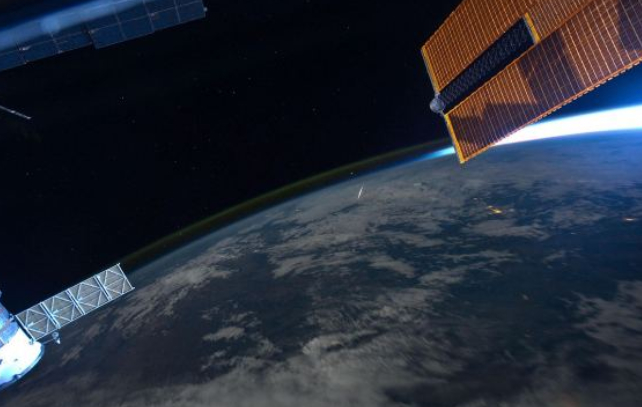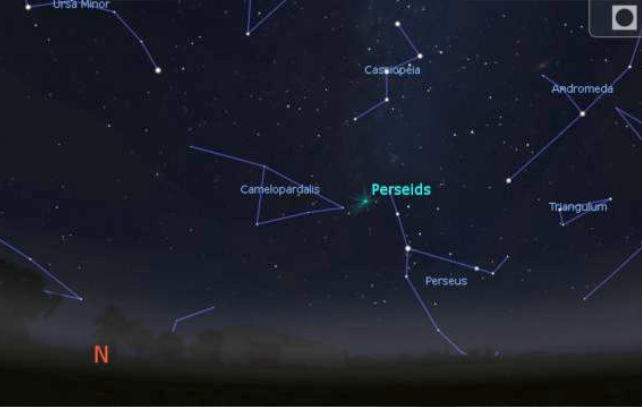Products You May Like
Great ready for one of the surefire astronomical events of 2024, as the peak for the Perseid meteors arrives next week.
To be sure, the Perseids aren’t the most intense annual meteor shower of the year; in the first half of the 20th century, that title now goes to the December Geminids.
What the Perseids do have going for them is timing: they typically arrive in early August, before the academic year starts and during prime camping season, which finds lots of folks out under warm summer skies.
Perseid Prospects for 2024
The Perseids are active across August, from July 14th to September 1st. In 2024, the shower is expected to display a broad peak, centered on the night of August 11-12th.

Typically, we see a twin peak in activity from the shower, though we expect the 2024 peak to arrive around 3:00 Universal Time (UT) on the 12th. This puts the shower high in the sky for northern Europe at dawn. North America isn’t far behind.
In 2024, the Moon will interfere somewhat, with a 44 percent illuminated waxing crescent phase setting around 11:30 PM local.
During recent years, the Perseids have displayed a maximum rate of up to 150 per hour, coming off high perihelion rates of 500 per hour in the 1990s. In 2024, expect to see around 100 per hour.
The Perseids: A Backstory
The source of the Perseids is none other than periodic comet 109P Swift-Tuttle.
On a 133 year orbit, the comet reaches perihelion again next century on July 12th, 2126. The approach radiant for the shower hails from the northern constellation of Perseus the Hero (near the star Eta Persei) hence the name.
Though the comet was only discovered in the mid-19th century, knowledge of the shower stretches back to antiquity. The Perseids are known as the “Tears of Saint Lawrence,” after the Christian saint who was martyred on a hot grid-iron on August 10th, 258 AD.
In Andalusian southern Spain, this name for the summer Perseids in still well-known.

Observing Meteors
Observing the Perseids is as simple as laying back, aiming your working set of ‘Mk-1 eyeballs’ at the sky, and waiting. A good alternate method of ‘hearing’ meteors is to tune an old school radio to an unoccupied section of the FM dial, and listening for meteor ‘pings’.
Two key factors come into play for a successful meteor watching expedition: watching at the correct time, under as dark a sky as possible. Don’t be afraid to start watching a few evenings prior this coming weekend.
For the US southeast, there’s always a good chance that Hurricane Debby could sweep out skies in its wake.

For Northern Hemisphere observers, the radiant rises around 10:00 pm local. It will be high in the sky to the northeast around local midnight. This means that you’ll start seeing meteors from the Perseids in the late evening after sunset.
Rates will really pick up after midnight, as you turn forward into the stream. You’re seeing ancient streams of cometary dust laid down by Swift-Tuttle, intersecting the 12,750 kilometer-wide tunnel carved out by the Earth. The Perseids have a respectable incoming relative velocity of 59 kilometers per second.
Though it may not seem it, even the largest, most brilliant Perseid meteors are the result of pea-sized grains. These are burning up in the Earth’s atmosphere about 80 to 120 kilometers overhead. Keep a pair of binoculars handy, to examine any lingering persistent smoke trains.
‘Hearing’ Meteors
Also, keep an ear out for any hissing audible meteors. This bizarre phenomenon was long thought to be a myth, or at most, a psychological phenomenon.
There’s now good evidence that meteors do transmit a corresponding radio emission that can be ‘heard’ near the observer. This effect is known as electrophonic sound. Powerful auroras are thought to produce a similar effect.
Imaging the Perseids or any meteor shower is as simple as aiming a tripod mounted DSLR camera at a section of the sky and taking long exposure shots. Use as wide a field of view aperture lens as you can. Then, take a series of test shots to get the ISO/f-stop/exposure time correct for current conditions.
An intervalometer is an invaluable tool for this, as you can simply program it to take a series of exposures, then turn it loose while you sit back and enjoy the show.
Finally, don’t forget to report what you see. When it comes to meteor showers, astronomers need all the data they can get. Simply count how many meteors you see in a given span of time, and report it to the International Meteor Organization (IMO).
Don’t miss a chance to get out under warm summer skies this coming week, and catch the 2024 Perseid meteors.
This article was originally published by Universe Today. Read the original article.
